Pair Of Dice Outcomes
Therefore, the number of possible outcomes when two dice are thrown is 36 Now, the possible outcomes of getting a sum equal to 8 is {(2,6),(3,5),(4,4),(5,3),(6,2)}, which means the number of favourable outcome is 5 Therefore, probability P of getting a sum equal to 8 is P = 365.

Pair of dice outcomes. As you can see, 7 is the most common roll with two sixsided dice You are six times more likely to roll a 7 than a 2 or a 12, which is a huge difference You are twice as likely to roll a 7 as you are to roll a 4 or a 10 However, it's only 12 times more likely that you'll roll a 7 than a 6 or an 8. 1For the experiment of rolling an ordinary pair of dice, find the probability that the sum will be even or a multiple of 5 (You may want to use a table showing the sum for each of the 36 equally likely outcomes) The probability that the sum of the pair of dice is even or a multiple of 5 is ___ 2For the experiment of rolling an ordinary pair of dice, find the probability that the sum will be less than 3 or greater than 4. Example 1 Coin and Dice Example A coin and a dice are thrown at random Find the probability of a) getting a head and an even number b) getting a head or tail and an odd number Solution We can use a tree diagram to help list all the possible outcomes From the diagram, n(S) = 12 a) Let A denote the event of a head and an even number.
Just as one die has six outcomes and two dice have 6 2 = 36 outcomes, the probability experiment of rolling three dice has 6 3 = 216 outcomes This idea generalizes further for more dice If we roll n dice then there are 6 n outcomes We can also consider the possible sums from rolling several dice. Statistics Understanding Basic Statistics Counting Outcomes You toss a pair of dice (a) Determine the number of possible pairs of outcomes (Recall that there are six possible outcomes for each die) (b) There are three even numbers on each die. Ex162, 3 An experiment involves rolling a pair of dice and recording the numbers that come up Describe the following events A the sum is greater than 8, B 2 occurs on either die C The sum is at least 7 and a multiple of 3 Which pairs of these events are mutually exclusive?.
In single dice, the sample space contains 6 possible outcomes On rolling dice, one out of these 6 numbers will occur So, calculating the probability of that event is given as For example, if we get 3 as an outcome of the trial, how 3 can occur is one, and the total number of possible outcomes, ie, events in sample space, is 6. Probability = Number of desired outcomes ÷ Number of possible outcomes = 3 ÷ 36 = 003 or 3% When you roll 2 dice, the number 7 has the highest probability as there are 6 ways for you to get it. The probability of getting a given value for the total on the dice may be calculated by taking the total number of ways that value can be produced and dividing it by the total number of distinguishable outcomes So the probability of a 7 on the dice is 1/6 because it can be produced in 6 ways out of a total of 36 possible outcomes.
It depends on what you qualify as an outcome If you are talking about the total of the two dice, then there are only 11 2, 3, 4, 5, 6, 7, 8, 9, 10, 11 and 12. Question 25 (OR 1st question) Jayanti throws a pair of dice and records the product of the numbers appearing on the dice Pihu throws 1 dice and records the squares the number that appears on it Who has the better chance of getting the number 36?. If one event has p possible outcomes, and another event has m possible outcomes, then there are a total of p • m possible outcomes for the two events Examples · Rolling two sixsided dice Each die has 6 equally likely outcomes, so the sample space is 6 • 6 or 36 equally likely outcomes.
The following spreadsheet shows the outcome of rolling A PAIR OF DICE times using a histogram Click on the image to open the calculator Click on the Excel icon to download the Microsoft Excel spreadsheet used by SpreadsheetConverter to generate the webpage Click to roll a pair of dice Excel spreadsheet for rolling a pair of dice. See Page 1 16) When a pair of dice is rolled, the outcome for each die can be said to be A) mutually exclusive B) mutually inclusive C) dependent D) independent 17) Assume P (A) = 04 and P (B) = 02 and P (A and B) = 01, then the probability of P (A or B) = 07. When we consider the sample space for a pair of dice, the sample space expands by sixfold Take a look at the sample space below The sample space consists of 36 outcomes Each outcome is equally likely, so the probability of each is 1/36 As shown above, we highlighted all those outcomes that are pairs, which occur 6 times.
Custom Pair Dice, personalized dice, 16mm dice, 6 sided dice, full custom on one side, gift, board games, dice for parties, Father's Day OkusoCustomGifts From shop OkusoCustomGifts 5 out of 5 stars (521) 521 reviews $ 1102 Favorite Add to. The probability of getting a given value for the total on the dice may be calculated by taking the total number of ways that value can be produced and dividing it by the total number of distinguishable outcomes So the probability of a 7 on the dice is 1/6 because it can be produced in 6 ways out of a total of 36 possible outcomes. Here are the possible outcomes when a pair of fair dice is rolled 1 2 3 4 5 6 1 2 3 4 5 6 7 2 3 4 5 6 7 8 3 4 5 6 7 8 9 4 5 6 7 8 9 10 5 6 7 8 9 10 11.
If you roll a pair of dice, for example, the number of total outcomes is 6 2 = 6 × 6 = 36, meaning every roll of the dice has a total of 36 possible outcomes You can use the formula for probability to calculate the probability of each possible roll For example, suppose you want to calculate the probability of rolling an 11. I've been stuck, please help!!. Possible rolls for a pair of dice Every time you add an additional die, the number of possible outcomes is multiplied by 6 So if you roll four dice, here’s the number of possible outcomes 6 4 = 6 6 6 6 = 1,296 Suppose you want to calculate the possibility of rolling four 6s.
Probabilities for the two dice The colors of the body of the table illustrate the number of ways to throw each total The probability of throwing any given total is the number of ways to throw that total divided by the total number of combinations (36) In the following table the specific number of ways to throw each total and the probability. In single dice, the sample space contains 6 possible outcomes On rolling dice, one out of these 6 numbers will occur So, calculating the probability of that event is given as For example, if we get 3 as an outcome of the trial, how 3 can occur is one, and the total number of possible outcomes, ie, events in sample space, is 6. An outcome of 24 represent two die rolls;.
Question 25 (OR 1st question) Jayanti throws a pair of dice and records the product of the numbers appearing on the dice Pihu throws 1 dice and records the squares the number that appears on it Who has the better chance of getting the number 36?. What is the probability of at least one three being rolled?. When a pair of dice is rolled the sample spaces associated with the random experiment is given by S = 8 ( 1, 1) , (1 , 2) , (1 , 3), (1, 4), (1, 5 ), ( 1, 6), (2, 1), (2, 2), (2,3), ( 2.
When a pair of dice is thrown simultaneously total number of outcome is 6*6=36 Step 2 Problem (i) To get 8 as a sum outcomes are (2,6),(6,2),(3,5),(5,3),(4,4) Total number of outcome is 5 There the probability of getting 8 as sum is =5/36 Problem (ii) To get doublet the outcomes are (1,1),(2,2),(3,3),(4,4),(5 5),(6,6) Total number of outcome is 6. What are the most likely outcomes from rolling a pair of dice?. Section 71 Sample Space and Events If we roll a pair of fair (not loaded) dice, then there are 36 equally likely outcomes and are shown below (table is from Terri Miller and Beth Jones) Experiments, Outcome, and Sample Spaces In the rolling of a pair of dice the setof all of the possible rolls that can occur make up the Sample Space.
List the setup outcomes that make up the event "at least one three is rolled" (meaning one three or pair of threes)?. With software and random number generators one can simulate a variety of experiments to see what the distribution of outcomes looks like at least one double six in 24 throws of a pair of dice. A pair of Dice are rolled How many total outcomes are possible?.
Keep in mind that not all partitions are equally likely For instance, with 3 6sided dice, there are 6 ways of rolling 123 but only 3 ways of rolling 114 and 1 way of rolling 111 To work out the total number of outcomes, multiply the number of dice by the number of sides on each die For 5 6sided dice, there are 305 possible combinations. For Jayanti She throws the dice twice Total outcomes = 36 Number of outcomes where product is. The first two dice together have 6 ⋅ 5 = 30 possible outcomes, from above For each of these 30 outcomes, there are four possible outcomes for the third die, so the total number of outcomes is 30 ⋅ 4 = 6 ⋅ 5 ⋅ 4 = 1.
An outcome of 3H represents a die roll followed by a coin toss. What are the most likely outcomes from rolling a pair of dice?. Assuming we have a standard sixsided die, the odds of rolling a particular value are 1/6 There is an equal probability of rolling each of the numbers 16 But, when we have two dice, the odds are not as simple.
Graph the sample space of all possible outcomes when a pair of dice is rolled Hence determine the probability of gettin Graph the sample space of all possible outcomes when a pair of dice is rolled Hence determine the probability of getting a a sum of 7 or 11 b a sum of at least 8. Probability = 1/6 × 1/6 = 1/36 If you need a numerical result, simply divide the numerator of the fraction by the denominator Probability = 1 ÷ 36 = or 278% If you need to get the probability of acquiring two different numbers when you roll a pair of dice, the calculation becomes a bit different. Since there are six rows, there are six possible outcomes where the sum of the two dice is equal to seven The number of total possible outcomes remains 36 Again, we find the probability by dividing the event frequency (6) by the size of the sample space (36), resulting in a probability of 1/6.
The possible outcomes are as follows Red die even, blue die even Red die even, blue die odd Red die odd, blue die even Red die odd, blue die odd. For Jayanti She throws the dice twice Total outcomes = 36 Number of outcomes where product is. Possible Outcomes and Sums Just as one die has six outcomes and two dice have 6 2 = 36 outcomes, the probability experiment of rolling three dice has 6 3 = 216 outcomes This idea generalizes further for more dice If we roll n dice then there are 6 n outcomes.
16) When a pair of dice is rolled, the outcome for each die can be said to be A) mutually exclusive B) mutually inclusive C) dependent D) independent. There are 36 possible outcomes for the roll of a pair of dice According to your specifications, the successes are Multiples of 3 1 2 (3) 2 1 3 3 (6) 1 5 5 1 2 4 4 2 3 6 (9) 6 3 4 5. (a) When two dice are rolled, the total outcome we would have is have n (S) = (6 * 6) = 36 outcomes (b) The number of outcome gotten for even numbers, which is 3 per dice is n (S) = (3 * 3) = 9 outcomes (c) The probability that both dice will show an even number, is one over total even number outcomes Probability of even number=>.
An ordinary pair of dice can roll any number from 2 to 12, but not all with the same probability The easiest way to see this is to label the individual dice to distinguish them (I'm going to call them R and C, for "row" and "column"), and draw a table showing the possible outcomes. (a) When two dice are rolled, the total outcome we would have is have n (S) = (6 * 6) = 36 outcomes (b) The number of outcome gotten for even numbers, which is 3 per dice is n (S) = (3 * 3) = 9 outcomes (c) The probability that both dice will show an even number, is one over total even number outcomes Probability of even number=>. Section 71 Sample Space and Events If we roll a pair of fair (not loaded) dice, then there are 36 equally likely outcomes and are shown below (table is from Terri Miller and Beth Jones) Experiments, Outcome, and Sample Spaces In the rolling of a pair of dice the setof all of the possible rolls that can occur make up the Sample Space.
A pair of dice is rolled If the outcome is a doublet, a coi A pair of dice is rolled If the outcome is a doublet, a coin is tossed Then, the total number of outcomes for this experiment is (A) 40 (B) 42 (C) 4 A pair of dice is rolled. Assuming we have a standard sixsided die, the odds of rolling a particular value are 1/6 There is an equal probability of rolling each of the numbers 16 But, when we have two dice, the odds are not as simple For example, there's only one way to roll a two (snake eyes), but. You toss a pair of dice (a) Determine the number of possible pairs of outcomes (b) There are three even numbers on each die How many outcomes are possible with even numbers appearing on each die?.
Keep in mind that not all partitions are equally likely For instance, with 3 6sided dice, there are 6 ways of rolling 123 but only 3 ways of rolling 114 and 1 way of rolling 111 To work out the total number of outcomes, multiply the number of dice by the number of sides on each die For 5 6sided dice, there are 305 possible combinations. With the above declaration, the outcomes where the sum of the two dice is equal to 5 form an event If we call this event E, we have E={(1,4),(2,3),(3,2),(4,1)} Note that we have listed all the ways a first die and second die add up to 5 when we look at their top faces. The second will be a number 1–6 An outcome of TT represent two coin tosses;.
Statistics Understanding Basic Statistics Counting Outcomes You toss a pair of dice (a) Determine the number of possible pairs of outcomes (Recall that there are six possible outcomes for each die) (b) There are three even numbers on each die. For each of the 6 outcomes on the first die, there are 6 outcomes possible on the second The total number of possible outcomes is then 6 × 6 = 36 2 The first outcome will be a letter H or T;. The number of outcomes for rolling a pair of dice is 36 1 way to figure that out is to actually list all the possibilities, which is actually fairly simple because of B can list them in a grid So, for example, if our first rolls a one and then our second rolls of one, let's say we roll the one on the first try again.
We know that in a single thrown of two different dice, the total number of possible outcomes is (6 × 6) = 36 (i) getting six as a product Let E 1 = event of getting six as a product The number whose product is six will be E 1 = (1, 6), (2, 3), (3, 2), (6, 1) = 4 Therefore, probability of getting ‘six as a product’ Number of favorable outcomes. Around the mid19th century, Swiss astronomer Rudolf Wolf rolled a pair of dice 000 times, recording each outcome Here is his data I’ve taken the data from Jaynes, who uses it as an example for maximumentropy methods We’ll use it for several examples, including some of Jaynes’ models. Example If I roll a pair of fair six sided dice and observe the pair of numbers on the uppermost face, all outcomes are equally likely, each with a probability of1 36 Let X denote the sum of the pair of numbers observed We saw that a value of 3 for X is associated to two outcomes in our sample space (2;1) and (1;2).
To find the total number of outcomes, note that there are 6 choices for the first die (values 1–6) and there are 6 choices for the second die (again values 1–6) and so by the Multiplication Principle (MP) there are 3 6 total outcomes from rolling two dice once. As you can see, 7 is the most common roll with two sixsided dice You are six times more likely to roll a 7 than a 2 or a 12, which is a huge difference You are twice as likely to roll a 7 as you are to roll a 4 or a 10 However, it's only 12 times more likely that you'll roll a 7 than a 6 or an 8. Each outcome is equally likely, so the probability of each is 1/36 As shown above, we highlighted all those outcomes that are pairs, which occur 6 times As such, the probability of rolling a pair of the same numbers is 6 x 1/36 or 6/36, which is equal to 1/6 Another way to think about this is as follows The probability of Dice 1 rolling a 1 is 1/6.

Jayanti Throws A Pair Of Dice And Records The Product Of The Numbers

How To Determine Probable Outcomes With Coins And Dice Dummies

Probability Worksheets With A Pair Of Dice Probability Worksheets Worksheet Template Probability
Pair Of Dice Outcomes のギャラリー

Probability Theory Definition Examples Facts Britannica

A Pair Of Dice Is Thrown Once I Write Sample Space For The Experiment Ii Find The Probability Math Quadratic Equations Meritnation Com
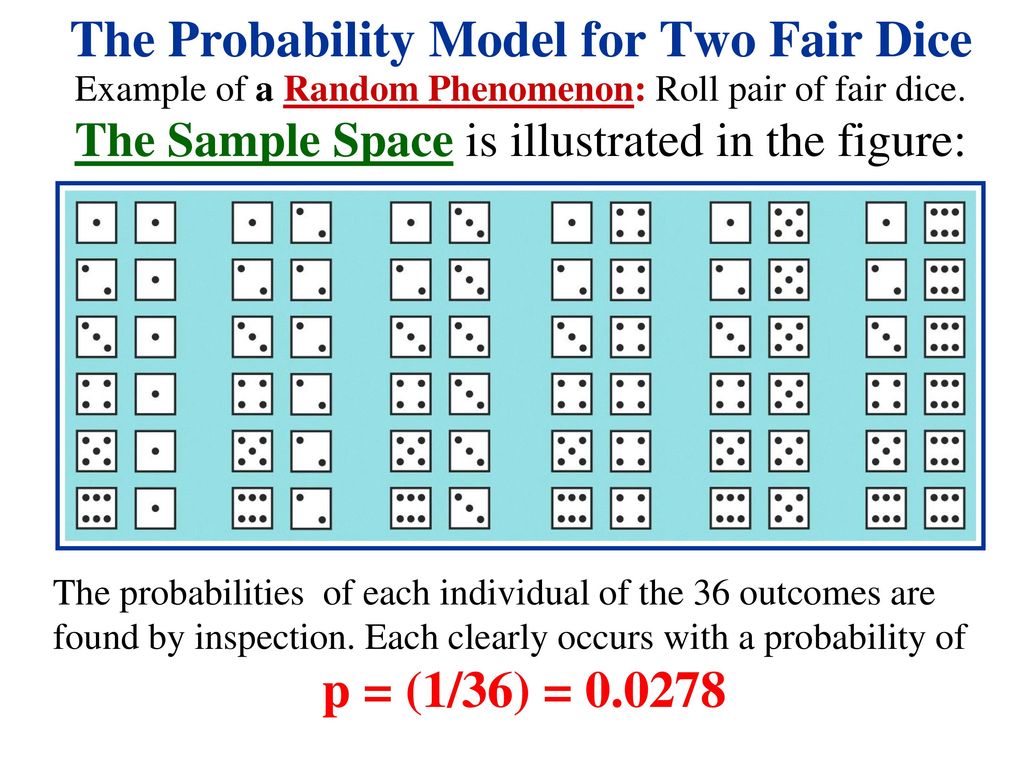
Dice Games Probabilities Ppt Download
Www Mayfieldschools Org Downloads 7 3 addition counting principle mutually exclusive and complement ans Pdf

Two Fair Six Sided Dice Are Rolled Once Let X Y Denote The Pair Of Outcomes Of The Two Rolls Find The Probability That The Two Rolls Result In The Same Outcomes Find

Part 1 Tossing Two Dice
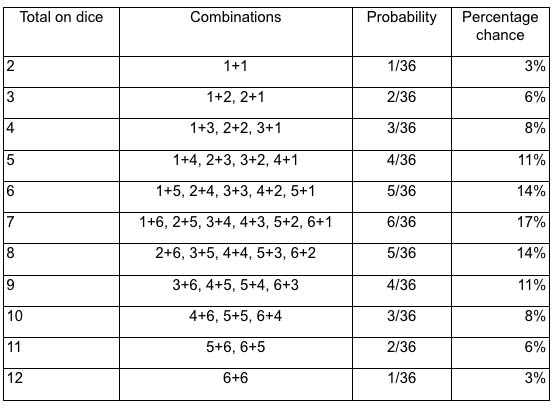
Calculating Chance The Rules Of Probability

Lab Report An Overview Of The Semester
Wolf S Dice Lesswrong

What Is The Probability Of Getting A Sum Of Eight If Two Dice Are Thrown At Once Quora
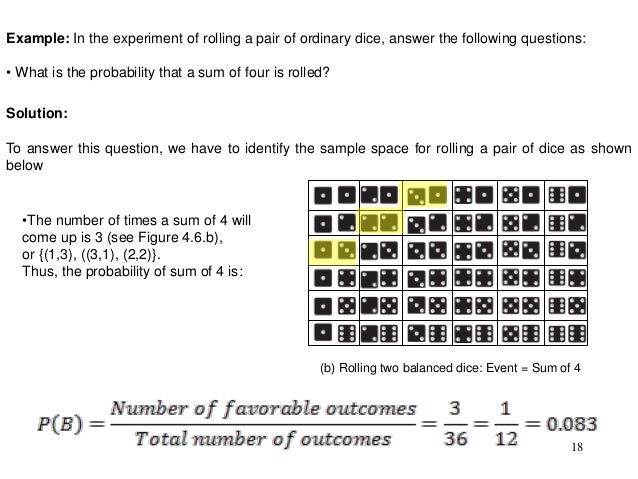
Intro To Probability
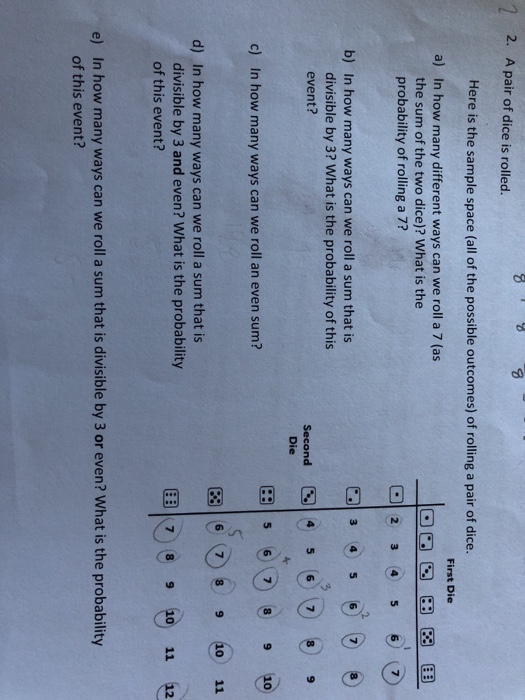
Solved 2 A Pair Of Dice Is Rolled Here Is The Sample Sp Chegg Com
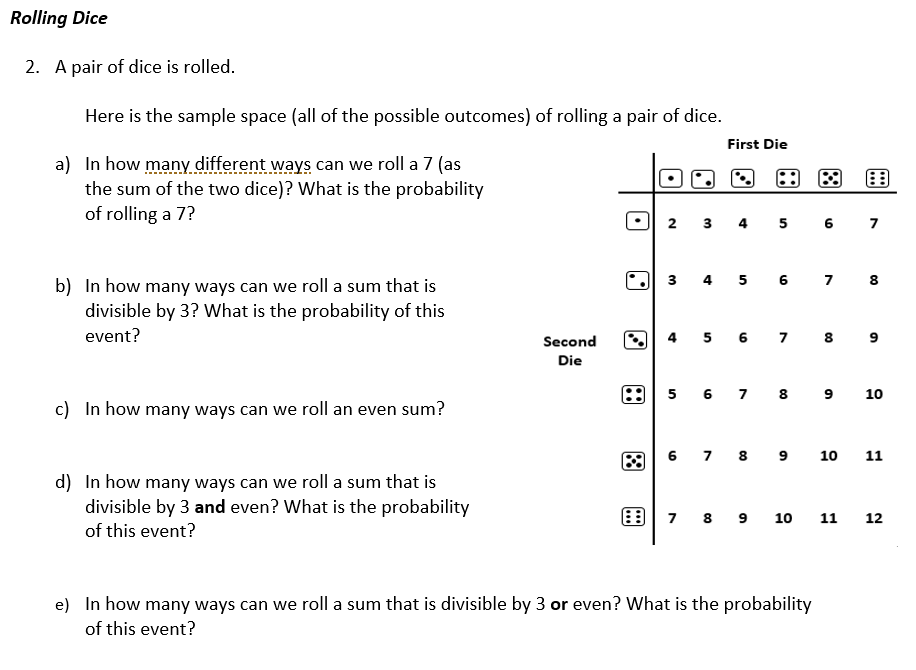
Solved Rolling Dice 2 A Pair Of Dice Is Rolled Here Is Chegg Com

Find The Sample Space Associated With The Experiment Of Rolling A Pair Of Dice Plural Of Die Once Also Find The Number Of Elements Of The Sample Space

Binomial Distributions And Probability Ck 12 Foundation

Example 25 Find Probability Distribution Of Number Of Doublets In 3

Probability Of A Pair Of Dice Powerpoint By Common Core Algebra Store

Solved An Experiment Involves Tossing A Pair Of Dice One Chegg Com
Let A Pair Of Dice Be Thrown And The Random Variable X Be The Sum Of The Numbers That Appear On The Two Dice Find The Mean Of X Sarthaks Econnect

A Pair Of Dice Is Thrown Twice Find The Probability Of Having Same Number On Both Of Them Math Probability Meritnation Com
A Pair Of Dice Is Rolled What Is The Probability Of Getting The Sum Of At Least 10 Quora
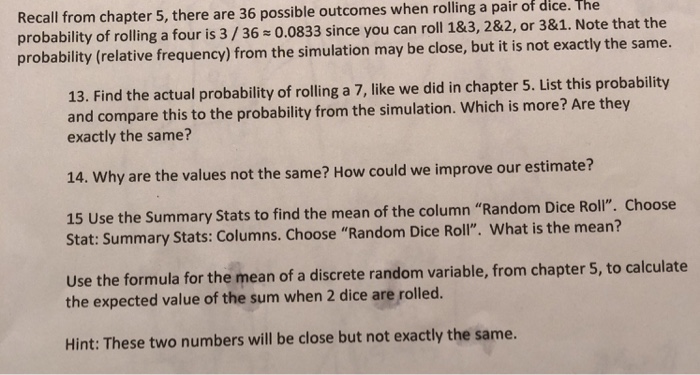
Solved Recall From Chapter 5 There Are 36 Possible Outco Chegg Com
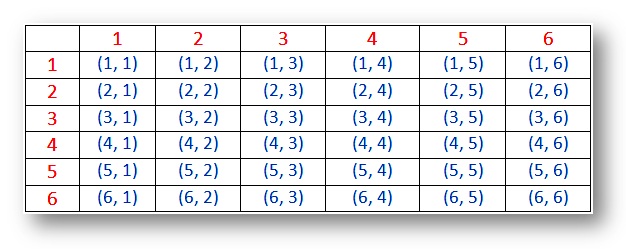
Probability For Rolling Two Dice Sample Space For Two Dice Examples

The True Odds Of Rolling Two Dice
Q Tbn And9gcqhiqms5govla4gzgjvzxy9tpgkab9wukvobesbg02uxuql2kys Usqp Cau

If You Roll A Pair Of Fair Dice What Is The Probability Of Each Of The Following Round All Answers To 4 Decimal Places 1 Getting A Sum Of 1 2 Getting

Lecture Notes Rolling Pairs Of Dice
/TwoDice-58bddad45f9b58af5c4aa0d4.jpg)
Probabilities For Rolling Two Dice

Dice And The Laws Of Probability

The Possible Outcomes For Rolling A Pair Of Fair Dice Are Shown What Is The Probability Of Rolling A Brainly Com
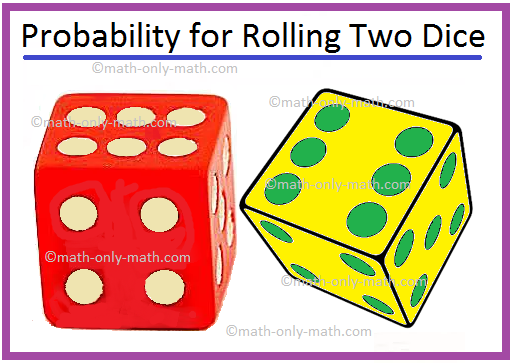
Probability For Rolling Two Dice Sample Space For Two Dice Examples

Ex 16 2 3 An Experiment Involves Rolling A Pair Of Dice

A And B Throw A Pair Of Dice Alternatively A Wins The Class 12 Maths Cbse

Rolling The Dice Ii Sas And R
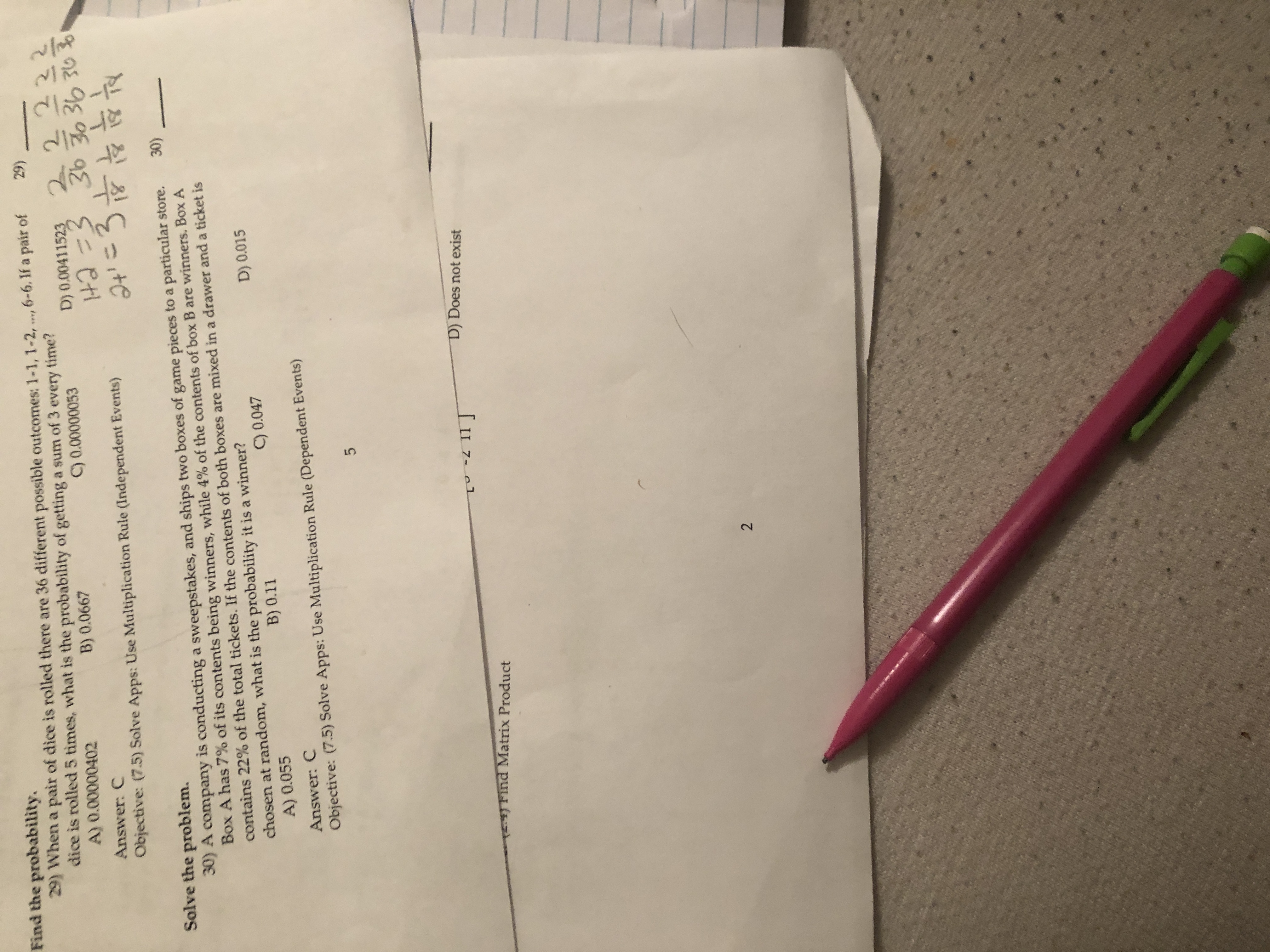
Answered Find The Probability 29 When A Pair Bartleby

Statistics Of Dice Throw
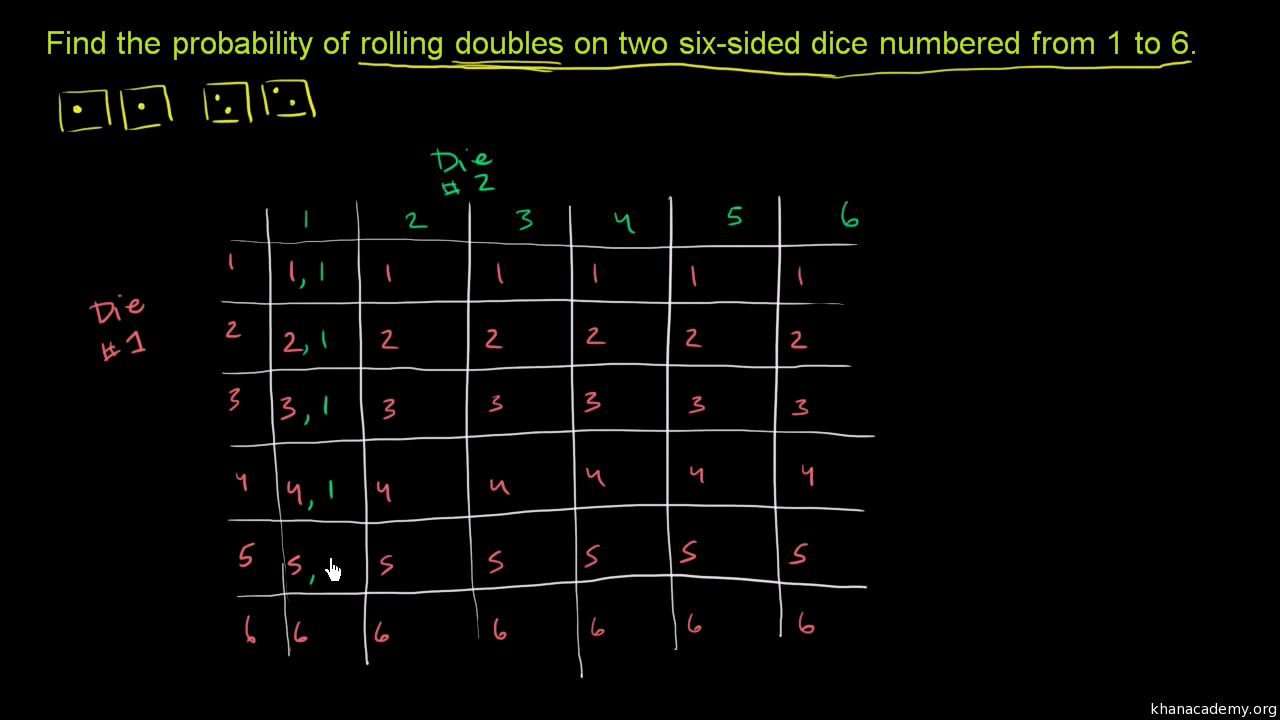
Die Rolling Probability Video Khan Academy
Solved 2 4 Points Which Sum Occurred Most Often 3 4 Points Which Sum Occurred Least Often Course Hero

If Two Dice Are Rolled Find The Probability Of Getting A Sum Of 8 Or 3 Quora

Part A And B Please A Pair Of Dice Are Rolled 1 000 Times With The Following Homeworklib

If You Roll 2 Dice What Is The Probability Of Doubles Or A Sum Of 5 Quora

Rd Sharma Solutions For Class 10 Chapter 13 Probability Exercise 13 1 Free Pdf Download

Article Htm

Pdf Sicherman Dice Equivalent Sums With A Pair Of Dice

Rolling Two Dice Experiment
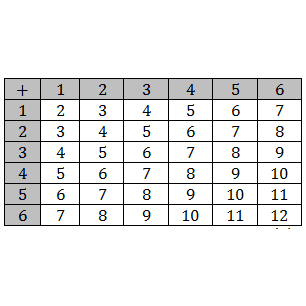
Probability Of Getting Either Of Sums On Rolling Or Throwing Two Dice Mathlibra
Q Tbn And9gcruccvdhqewg0zufvhyjjxffyxgtpwwwsnjxb90dkbezjkp Bpo Usqp Cau

Fantasy And Science Fiction Science By Pat Murphy Paul Doherty

A Pair Of Dice Is Thrown 4 Times If Getting A Doublet Is Considered A Success Find The Probability Distribution Of The Number Of Successes Mathematics Topperlearning Com 1menrq9dd

Solved I Roll A Pair Of Dice To Complete The Table Below Chegg Com

View Question Please Help And Explain How You Got The Answer In Full Sentences For Part B
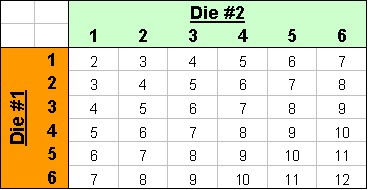
Consequences Probability Dice

Die Rolling Probability Video Khan Academy

What Is The Probability Of Rolling A Sum Of 10 With Two Dice Socratic

Probability

A And B Throw A Pair Of Dice If A Throws 9 Find B S Chance Of Throwing A Higher Number Brainly In
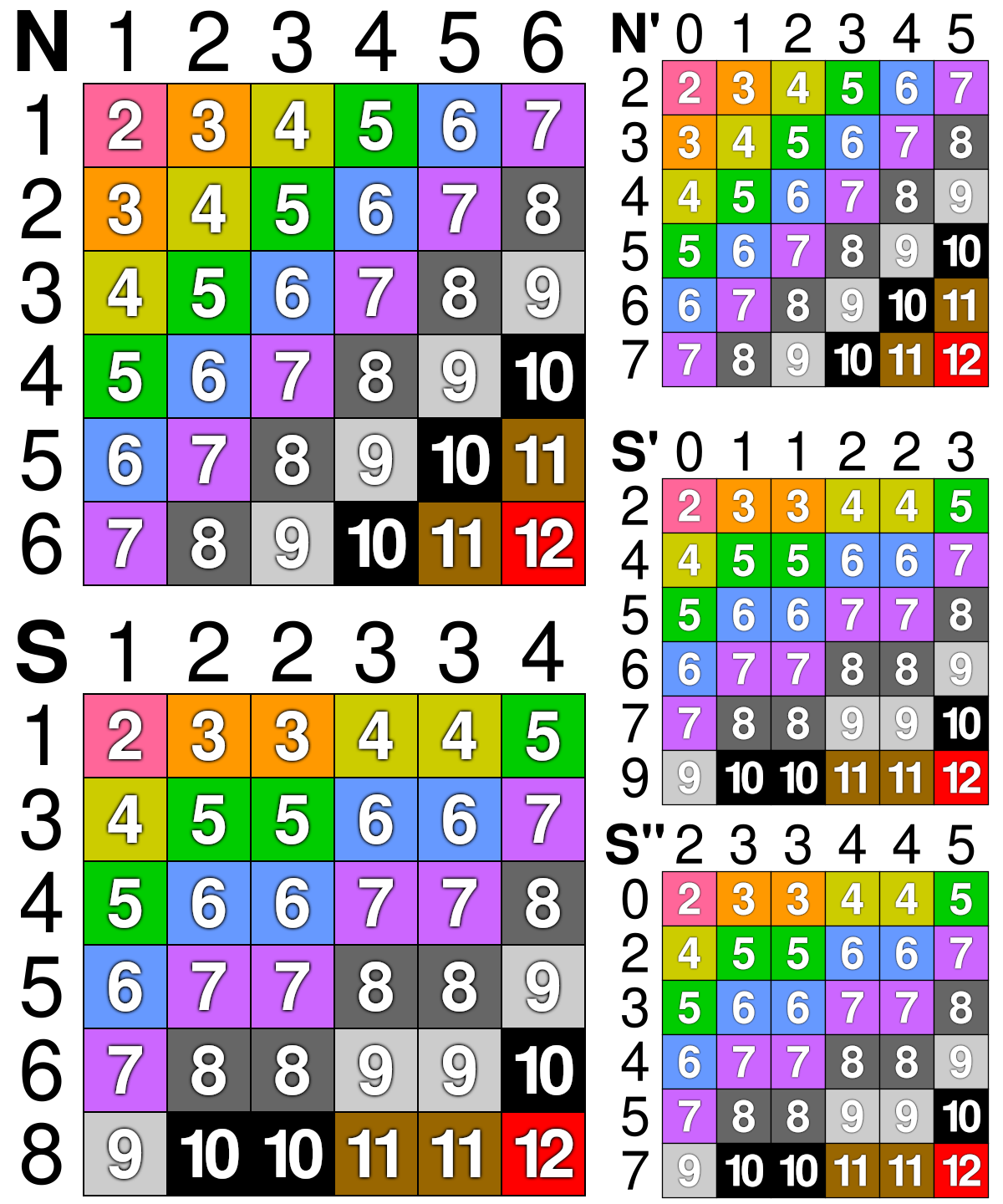
Sicherman Dice Wikipedia
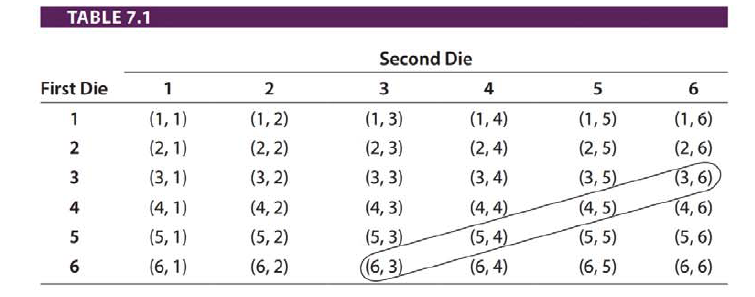
Use Table 7 1 To Determine The Following Probabilities If A Distinguishable Pair Of Dice Is Rolled A Pr Sum Is 4 B Pr Sum Is 10 C Pr Sum Is 12 To Find The Probability
Q Tbn And9gcrhow Izjiduegja1zbpwo3yzyledpmchhb9bi 03q 3q21cnm Usqp Cau
A Pair Of Dice Is Thrown Find The Probability Of Getting A Sum Of 10 Or More If 5 Appears On The First Die Sarthaks Econnect Largest Online Education Community

Answered 8 2 59 Question Help A Pair Of Dice Are Bartleby

Yahtzee Probability

The Outcome Of Rolling A Pair Of Dice Consists Of Two Numbers The Two Tables Below List All Of The Brainly Com

A Pair Of Dice Is Rolled If The Outcome Is Doubiet A Cone Is Tossed Determine The Total Number Of Elementary Events Associated To This Experiment

Probability Distribution Sum Of Two Dice Youtube

Sample Space And Tree Diagrams Mathbitsnotebook Ccss Math

Philosophico Scientific Adventures By Bryan W Roberts
Answer In Statistics And Probability For Sharmaake

Why Is The Sum Of The Rolls Of Two Dices A Binomial Distribution What Is Defined As A Success In This Experiment Mathematics Stack Exchange

Ppt Warm Up Define Sample Space Give The Sample Space For The Sum Of The Numbers For A Pair Of Dice Powerpoint Presentation Id
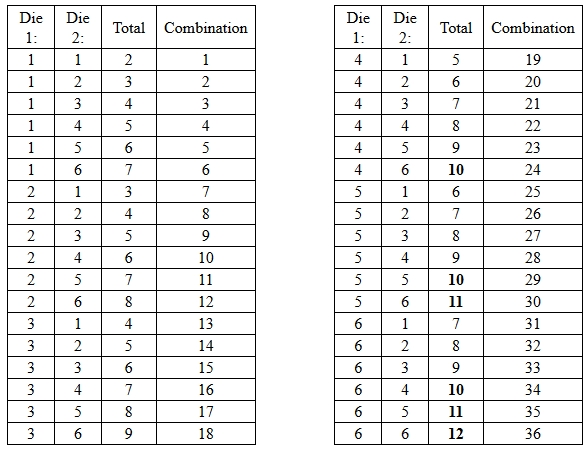
What Is An Exact Test

Analyzing Sample Space For Roll Of Dice Youtube
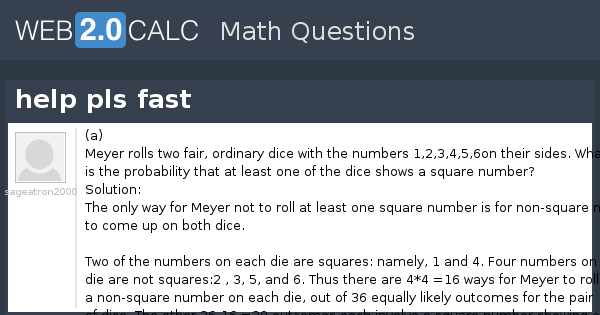
View Question Help Pls Fast
Manchestermath Files Wordpress Com 14 02 Packet Day 2 Key Pdf
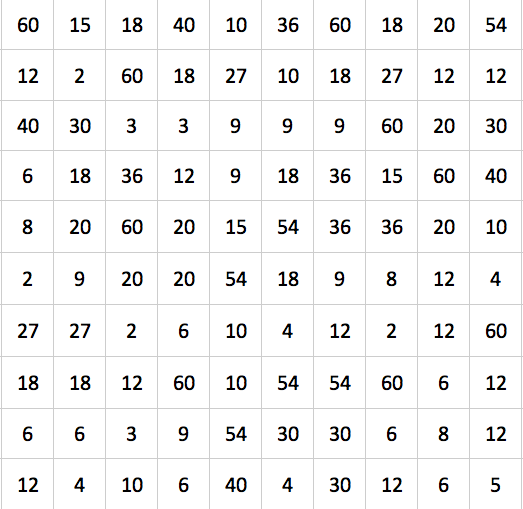
100 Rolls Task Natbanting Com
What Is The Probability Of Getting A Sum Of 6 If Two Dice Are Thrown Quora
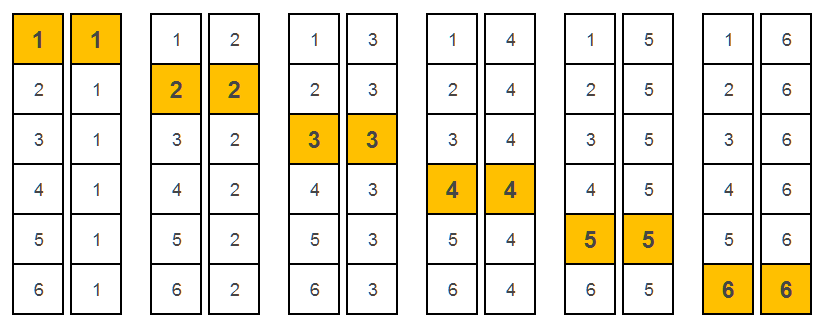
Probabilities Dice Roll Simulations In Spreadsheets Spreadsheetsolving
If A Pair Of Dice Is Thrown Then What Is The Probability Of Getting A Total Of 5 Or 11 Quora

An Experiment Involves Tossing A Pair Of Dice One Green And One Red And Recording The Numbers That Come Up If X Equals The Outcome On The Green Die And Y The
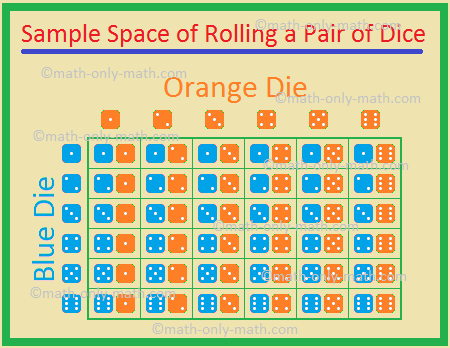
Probability For Rolling Two Dice Sample Space For Two Dice Examples

Lab Report An Overview Of The Semester

A Pair Of Dice Is Thrown 4 Times If Getting A Doublet Is Considered As A Success 1 Find The Probability Of Getting A Doublet 2 Hence Find The Probability Of Two Successes

A Pair Of Dice Is Tossed Once Find The Probability Of Gettinga A Total Of 2b A Total Of 5c An Even Brainly In
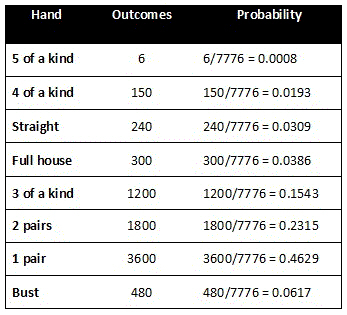
Probability And Poker Dice Carnotcycle

Chapter 6
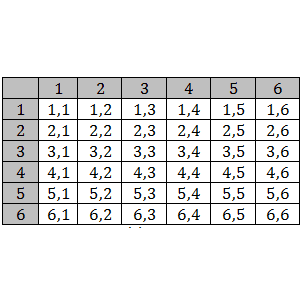
Probability Of Getting Anything On Rolling Or Throwing Two Dice Mathlibra

With Two Dice What S The Probability Of Rolling Doubles Blog Monty Hall Problem Simulation Game Stay Or Switch

Use A Grid To Determine Probabilities Of Rolling Two Dice And Determining Outcomes Youtube

In A Simultaneous Throw Of A Pair Of Dice Find The Probability Of Getting 8 As The Sum

Ex 13 5 2 A Pair Of Dice Is Thrown 4 Times Getting Doublet
P5 Statcrunch Activity Rolling Two Dice Data Analysis And Probability For Teachers
Http Www Mayfieldschools Org Downloads Lesson 7 3 key2 Pdf

Simple Probability 2 Of 2

In A Simultaneous Throw Of A Pair Of Dice Find The Class 12 Maths Cbse

Chapter 4 Discrete Probability Distributions Roll Two Dice And Record The Sums Physical Outcome An Ordered Pair Of Two Faces Showing We Assign A Numeric Ppt Download

What Is The Probability Of Rolling Doubles On A Pair Of Dice Socratic

If You Roll A Fair Six Sided Die Twice What S The Probability That You Get The Same Number Both Times Mathematics Stack Exchange

Probabilities And Dice
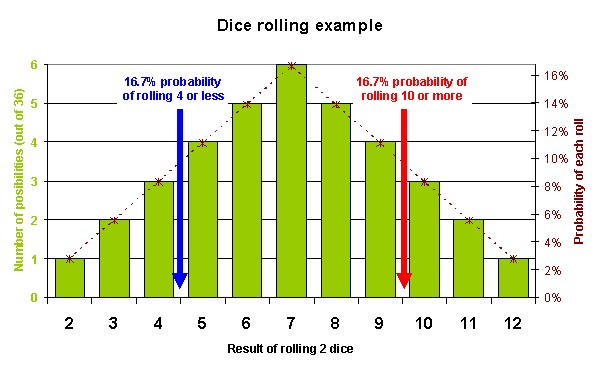
Consequences Probability Dice
Q Tbn And9gcs16opgx2e Gjvurzx2tuaifpya9 Wgorlg7nlskivkdqdgtykx Usqp Cau

Probability Of Fair Pair Of Dice Youtube



